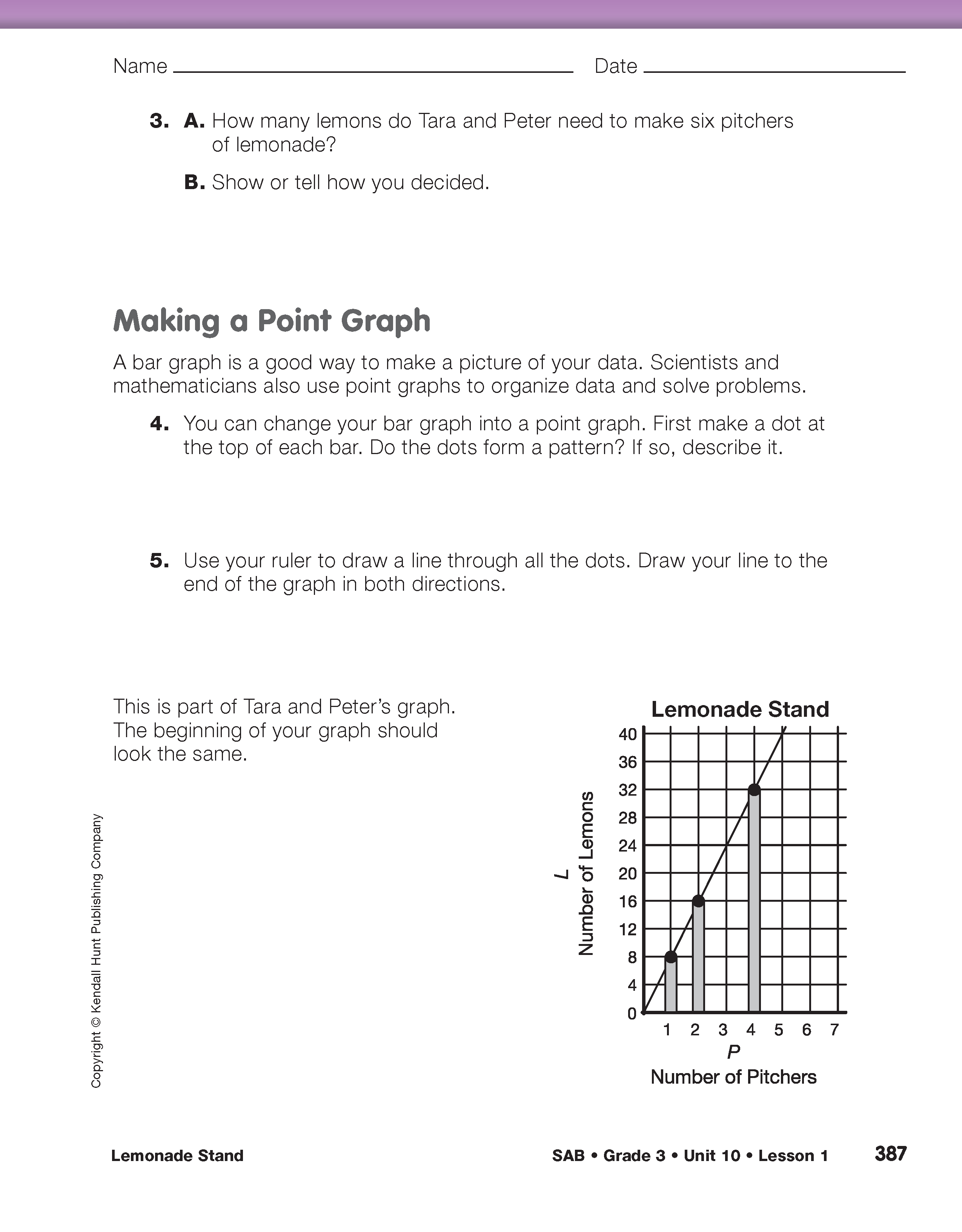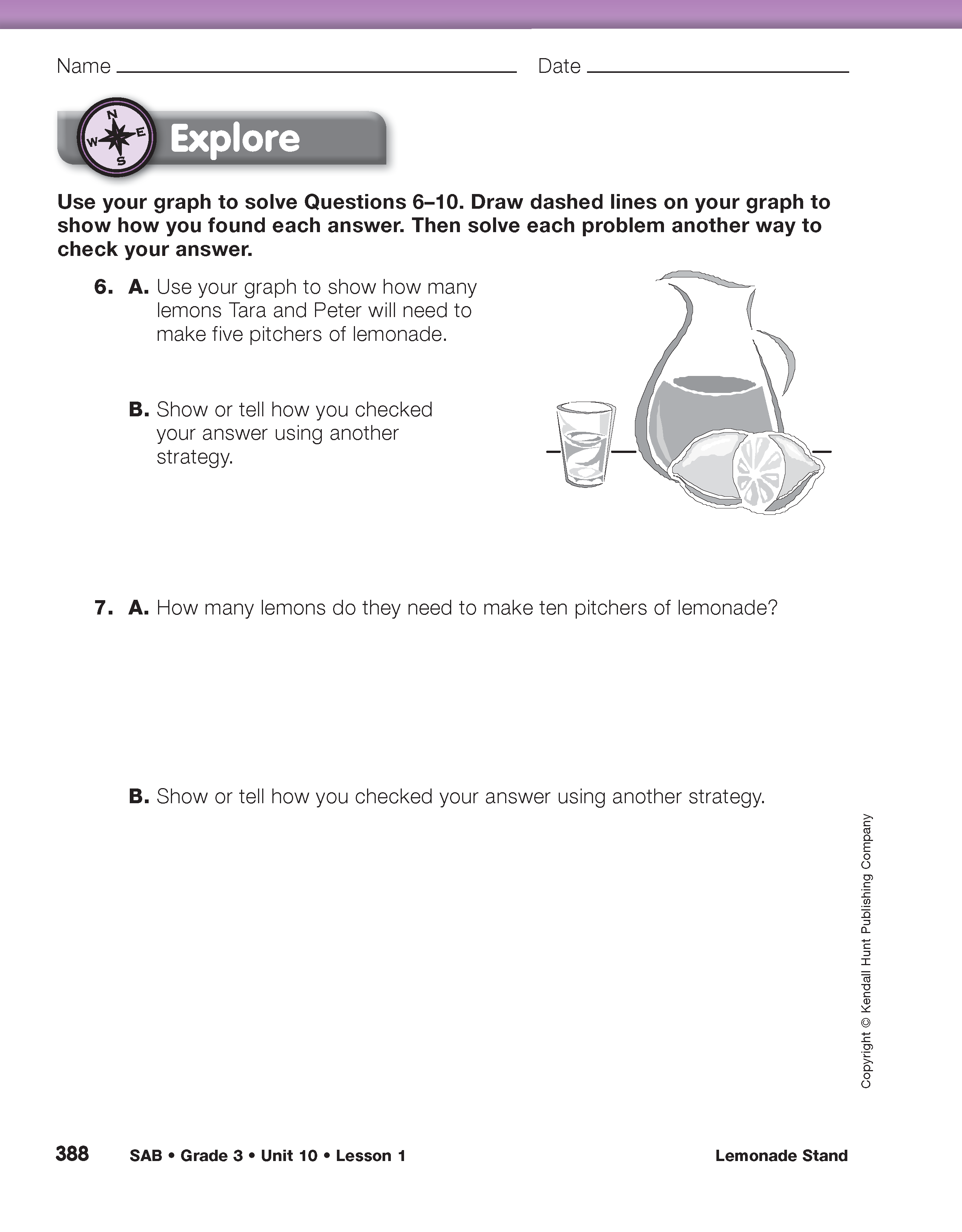Lemonade Stand
Est. Class Sessions: 2Developing the Lesson
Part 2. Making and Using a Point Graph
Make a Point Graph from a Bar Graph. A class discussion of student strategies for solving Question 3 might include the observation that it is possible to fit a ruler along the tops of the bars and draw a straight line. This line can then be used to predict the height of the bar for six pitchers. Questions 4 and 5 develop this technique.
As shown in Figure 3, students draw dots at the top of each bar and then look to see whether the dots form a pattern. Since the dots lie along a straight line, they draw a line through these points with a ruler, extending the line in both directions. You can demonstrate the procedure using a ruler and the display of the Lemonade Stand Graph Master. See Content Note.
If the dots on the bars cannot be connected by a straight line with a ruler, the student has drawn the graph incorrectly. Review the display of the Lemonade Stand Graph Master and the prompts in Part 1 to help students check the accuracy of their graphs.
Use the Point Graph to Solve Problems. In Questions 6 and 7 in the Student Activity Book students use the graph and a ruler to find the answer by drawing a line going up from the number on the horizontal axis (number of pitchers) until they reach their graph line, then extend this line left until they reach the vertical axis (number of lemons), as shown in Figure 4. Students should draw dashed lines to show their work so these lines will not be confused with the line connecting the data points. Demonstrate this on the display of the Lemonade Stand Graph Master.
Questions 8–10 will require students to perform this process in reverse: They will begin drawing their dashed line at the vertical axis (number of lemons) and will find their answer on the horizontal axis (number of pitchers).
Solving Questions 6–10 two ways encourages students to look back at their work and discover the connection between the line graph and multiplication and division.
Questions 6 and 7 can be solved using multiplication and Questions 8–10 can be solved using division. Before students begin their work discuss tools and strategies they can use to check their answers.
Ask:
Question 10 can also be solved using division but requires interpreting a remainder. Since the answer is halfway between five and six pitchers, students might say Tara and Peter can make 51/2 pitchers or they can make 5 pitchers but will have four lemons left over. Both answers are correct.
Students are asked to write a number sentence to show how many lemons they can purchase for $9.00 if lemons are on sale four for $1.00 in Question 11A. Students may represent this as a repeated addition problem, 4 + 4 + 4 + 4 + 4 + 4 + 4 + 4 + 4 = 36 lemons or as a multiplication problem, 4 × 9 = 36 lemons. Make sure students are able to tell what the numbers represent in the number sentence they choose. To answer Question 11B students will need to know that there are 24 lemons in 2 dozen.
Share Solution Strategies. After students have completed Questions 6–11, ask two students to explain their solutions for each problem. One student will demonstrate how to use the line drawn on the display of the Lemonade Stand Graph Master to solve the problem. The other student will show how he or she solved it using a second method. The short discussion in the Sample Dialog box includes sample discussion prompts and possible student responses.



















